More than 30 hectares of rice fields belonging to Ms. Vi Thi Khuyen's family in Dong Minh village, Chau Hanh commune were buried after the flood on September 27. Because the rice fields were located close to the bank of Na Ca stream, when the flood came, the entire rice fields of the family and more than 120 households were deeply submerged in floodwaters, many areas were buried under sand and mud.
When the mud dries up, the “water-filled” rice flowers lying under the deep mud layer begin to sprout. Trying to pick up the rice flowers that are still sticking out of the thick mud layer, Ms. Khuyen shared: “During the recent flood, my family was severely flooded, all our assets were submerged in water, including 400 kg of rice that was soaked in water all day, so it can only be used as animal feed. Now the fields are also flooded and there is no harvest, my family is determined to have a food shortage."
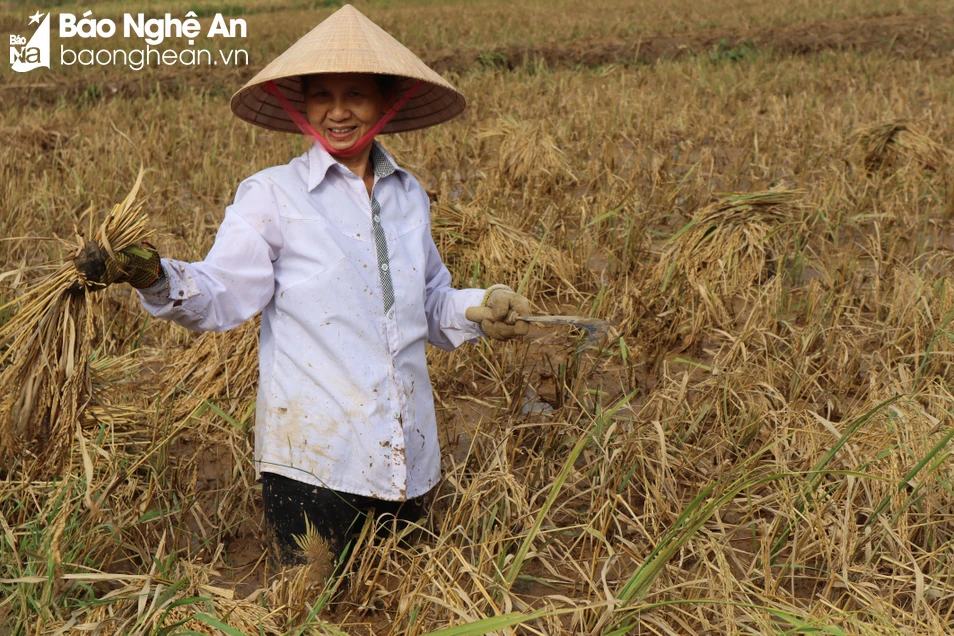
Farmers in Dong Minh village have just started to harvest rice these days. Although the local government and agricultural officials have encouraged people to harvest rice after the flood, the rice areas that are 60-80% ripe should be harvested as soon as the water recedes, but in this area, the thick mud makes it difficult to harvest rice.
Mr. Luong Van Thang in Dong Minh village is also wading in knee-high mud, stretching to pick up each rice flower. Mr. Thang sadly said: "If we evaluate the yield, this year's summer-autumn crop is more productive than the same period last year because the weather was quite favorable during the initial plowing and transplanting stages. My family's rice field was expected to be harvested in only 10 days. Now the crop has failed, I feel sorry for the money and effort, so I try to stay and harvest as much grain as I can to raise chickens and ducks.
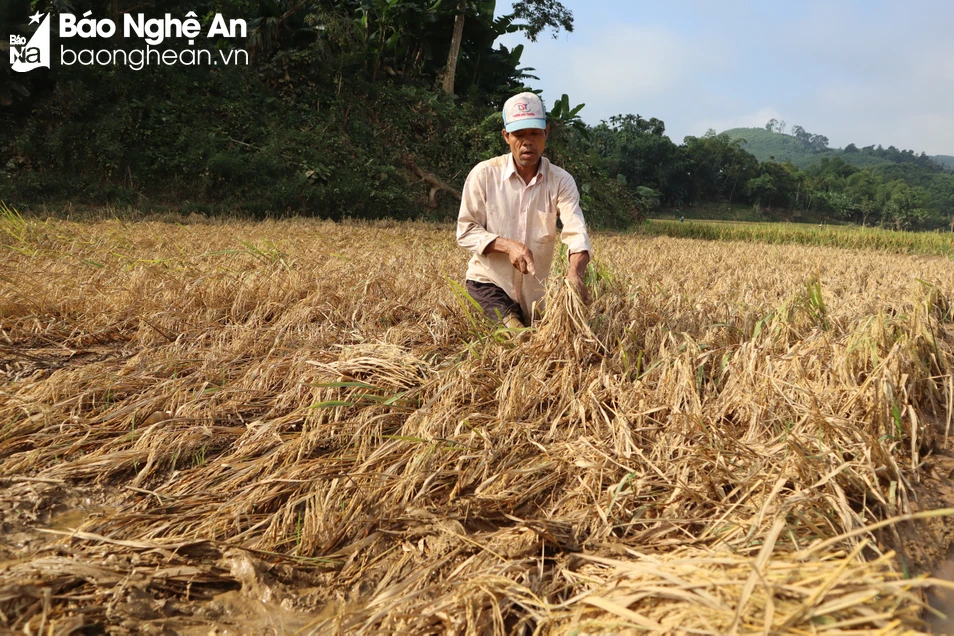
In the summer-autumn crop of 2023, the entire Quy Chau district planted more than 1,800 hectares, of which more than 850 hectares suffered 70-100% yield damage. Hundreds of hectares of rice were flattened and filled with white sandbanks 30cm to 1m thick.
Immediately after the flood receded, the District People's Committee, the Department of Agriculture and the People's Committees of communes and towns with deeply flooded rice fields directed people to overcome the problem: Concentrate forces to clear the flow and drain water in rice fields to limit damage caused by fallen rice, limit rice sprouting and fungal diseases.
For rice areas in the green stage, after draining the water in the field, stand the rice upright by gathering 3-5 rice stalks together, to create favorable conditions for the rice to be firmer and ripen faster. For rice areas with about 80% or more of ripe rice, farmers should take advantage of the dry weather to harvest quickly and promptly to avoid letting the rice sprout right in the field, minimizing damage.
According to the total damage to agriculture, forestry and fishery, in the whole Quy Chau district, over 850 hectares of rice were flooded and buried; over 234 hectares of perennial trees were flooded and broken; over 120 hectares of crops were damaged; over 769 livestock and 23,000 poultry died. The estimated damage was over 142 billion VND.
Source


![[Photo] Prime Minister Pham Minh Chinh receives delegation from the US-China Economic and Security Review Commission of the US Congress](https://vphoto.vietnam.vn/thumb/1200x675/vietnam/resource/IMAGE/2025/5/7/ff6eff0ccbbd4b1796724cb05110feb0)




![[Photo] General Secretary attends the parade to celebrate the 80th anniversary of the victory over fascism in Kazakhstan](https://vphoto.vietnam.vn/thumb/1200x675/vietnam/resource/IMAGE/2025/5/7/dff91c3c47f74a2da459e316831988ad)



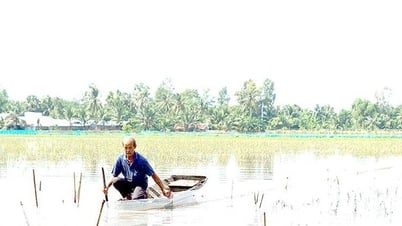





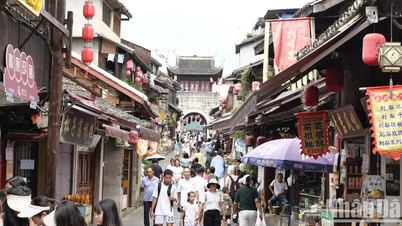
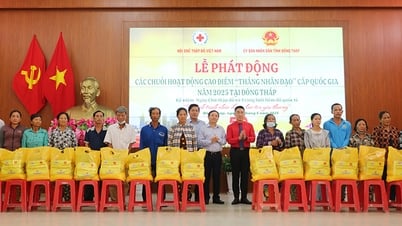

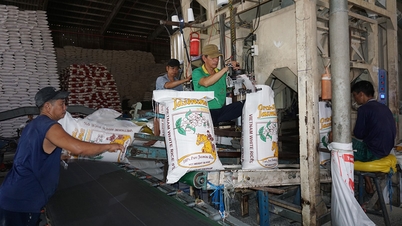
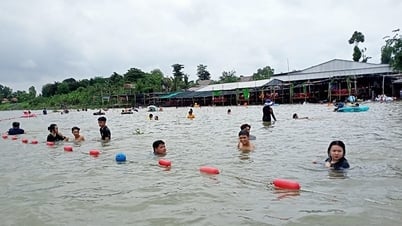
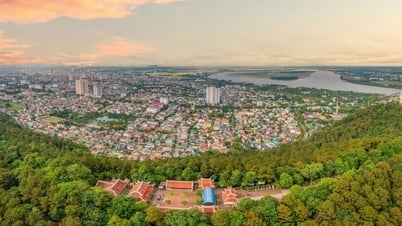























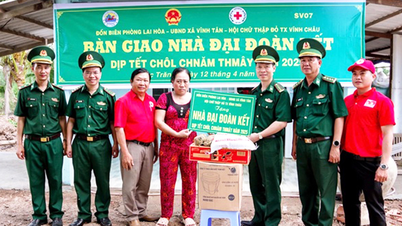































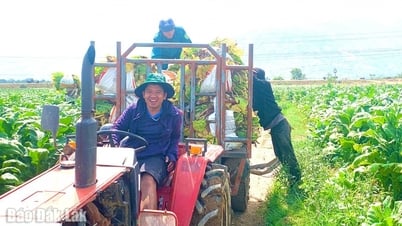

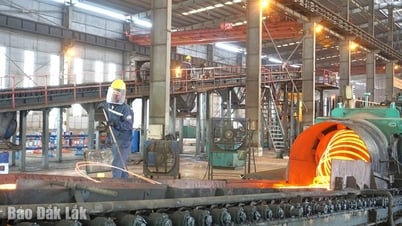
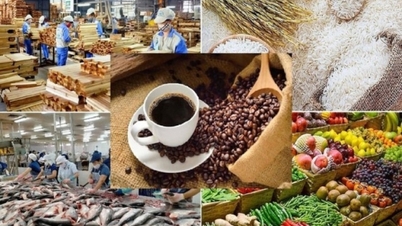





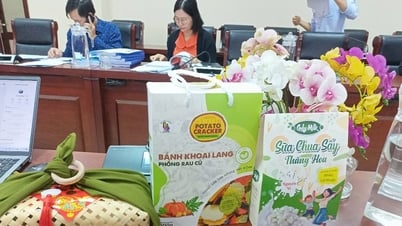





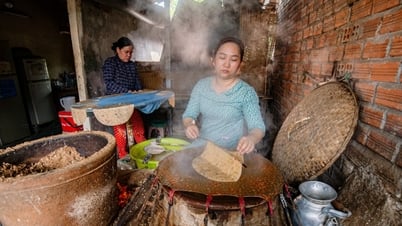



Comment (0)